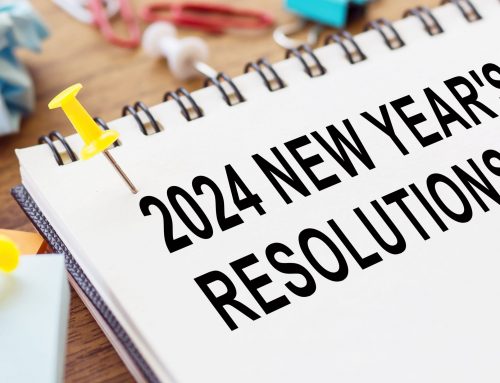“I did yoga with my students last year, mainly in my first block class. They said it helped their focus for the remainder of the day and helped reduce the stress of homework and outside things.” – Mac Underwood-Cohick, Physical Education and Health Teacher, The Ensworth School, Nashville, TN
“I’ve used yoga with my classes and really enjoy it. The students crave the calmness and the change to tune things out while they’re on their mat!” – Hannah Fukahara, Physical Education Teacher, HW Wilkey Elementary, Leitchfield, KY
“I did chair yoga and an entire mindfulness day. We did coloring, guided imagery, and made stress balls! They LOVED it!” – Ashley Morgan, Physical Education and Health Teacher, Walnut Hills High School, Cincinnati, OH
“In addition to the 20 minutes of whole-school yoga each morning, we also encourage teachers to use it throughout the day when they notice the kids need a “cool down”, such as after recess or assemblies. Our Office Discipline Referrals have decreased significantly, partially due to the proactive teaching of coping strategies. Teachers who use mindfulness and character education have much stronger relationships with their students.” – Tiffany Cook, Principal, Simmons Elementary, Versailles, KY
Teachers and principals like these speak to the positive outcomes they have experienced by leading yoga with their students. Multiple research studies have also demonstrated positive outcomes of yoga on students’ mental health such as reduced stress and anxiety (Sarkissian et al., 2018), reduced behavioral issues (Martinez & Zhao, 2018), and improved classroom climate (Roeser et al., 2012). “Wow!” you say. “I’ve never even done yoga before. How do I start?”
Tips for Classroom Yoga
Where to Get Equipment
Where can I get the mats? Several equipment companies sell them for fairly reasonable costs. Start small and purchase five if you can. Perhaps you can use them as centers in your classroom. You can also check with the Physical Education teacher in your school to see if they have any they want to discard or are willing to loan. Also, local fitness centers may be willing to donate some new or gently used mats if they know it is going towards education, as they can write it off on taxes.
Classroom Yoga Activities
What types of activities can my students do with the mats? If you have never participated in yoga before or led a group, there are plenty of websites and other resources that offer basic information on beginning yoga. Here are a few activity ideas to get you started:
- Move and Freeze Yoga
- Show the students a few yoga poses (e.g., cat pose, chair pose, cobra pose) and have them perform them with you as they remain beside their desk or in their personal space.
- On “Go,” have the students walk around the room quietly.
- On “Cat Pose!” students immediately stop right where they are and strike the appropriate pose for a short time (e.g., 5 seconds).
- Personal Yoga Challenge
- While in their own personal space, the teacher describes aspects of a particular yoga pose, allowing students to act it out and guess what he/she is describing.
- For example, “I challenge you to perform a yoga pose that involves two parts of your body to be in contact with the ground.”
- Another example, “I challenge you to create a partner yoga pose in which one body is at a high level and another is at a low level.”
- Design a Pose
- Students stand in front of their chairs.
- The teacher challenges the students to create a chair yoga pose (must use the chair) that works their abdominal/stomach muscles. This might involve them sitting on their chair and lifting their legs in front of them.
- Next, challenge them to show a different chair yoga pose to work on their upper body or arms. This might be some type of modified push up.
Additionally, a variety of yoga posters and cards are available to help mix up the activities you might use with your class.
Incorporating Mindfulness

How do I incorporate the mindfulness part? Well, let’s define mindfulness first. According to Niemiec (2017), mindfulness is “letting go of taking things for granted”, “returning to the present moment”, and “the self-regulation of attention with an attitude of curiosity, openness, and acceptance”. With these definitions in mind, we want students to focus on the here and now (not what happened in specials 25 minutes ago or what we are having for lunch in an hour). We also want them to be aware of their own body. What are they feeling in the moment? Are they tired? Jittery? Alert? How are they feeling? Happy? Rejected? Like a failure?
As you lead students through different poses, try to have them focus on their current thoughts and feelings. Dimming the lights may help. Slow, quiet music may help, or it may detract. Asking students to close their eyes and relax their eyelids may help calm the mood. Work on having students hold a pose (it doesn’t have to be a really difficult one that causes them to act squirrely), and breathe slowly in and out of their nose and mouth. Talk them through a positive thought process so they will open their eyes after releasing from their yoga pose to feel a sense of relief and rest. I hope you have as many positive outcomes as the teachers who shared quotes in this blog did!
References:
Martinez, T., & Zhao, Y. (2018). The impact of mindfulness training on middle grade students’ office discipline referrals. Research in Middle Level Education, 41(3), 1-8.
Niemiec, R. (2017). 3 definitions of mindfulness that might surprise you. Retrieved August 16, 2019, from https://www.psychologytoday.com/us/blog/what-matters-most/201711/3-definitions-mindfulness-might-surprise-you
Roeser, R. W., Skinner, E., Beers, J., & Jennings, P. A. (2012). Mindfulness training and teachers’ professional development: An emerging area of research and practice. Child Development Perspectives, 6(2), 167-173.
Sarkissian, M., Trent, N. L., Huchting, K., & Singh Khalsa, S. B. (2018). Effects of a Kundalini yoga program on elementary and middle school students’ stress, affect, and resilience. Journal of Developmental & Behavioral Pediatrics, 39(3), 210-216.
Add Yoga to Your Classroom
Heather is a Professor in the Department of Kinesiology and Health Promotion at the University of Kentucky. She is a former physical education teacher, and co-author of Dynamic Physical Education for Secondary School Children, 8ed. Heather was also the recipient of the NASPE Curriculum and Instruction Young Scholar Award and a AAHPERD Research Consortium Fellow.









Leave A Comment